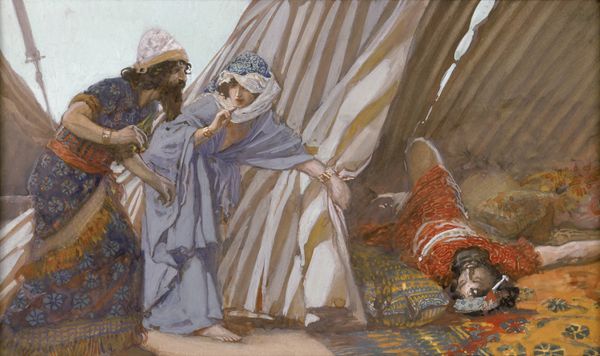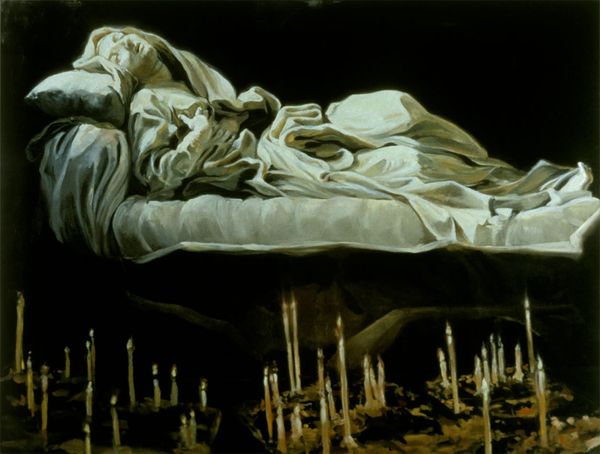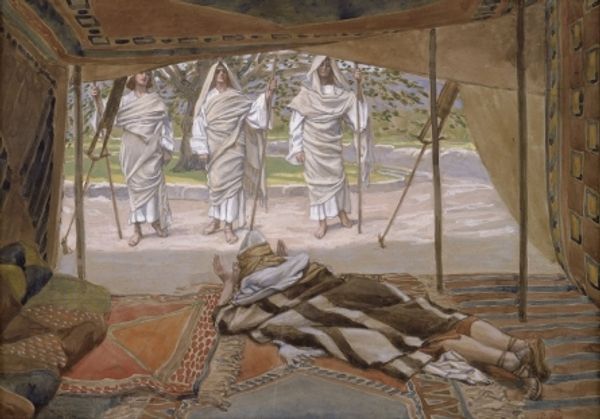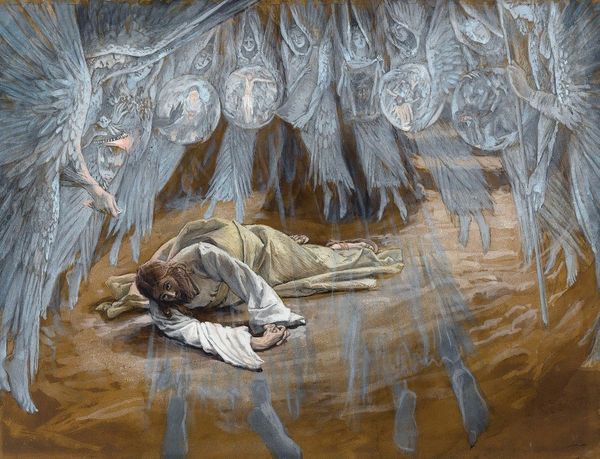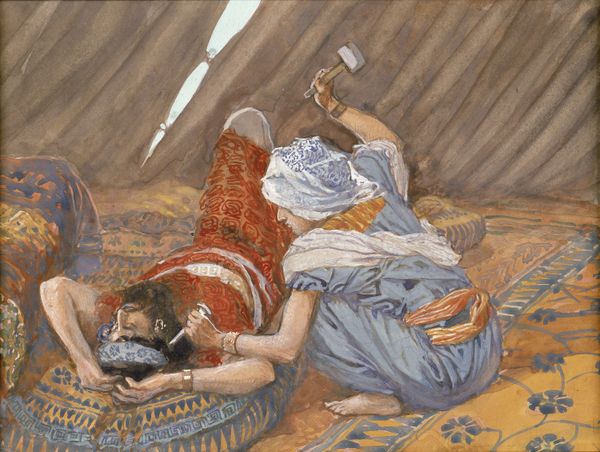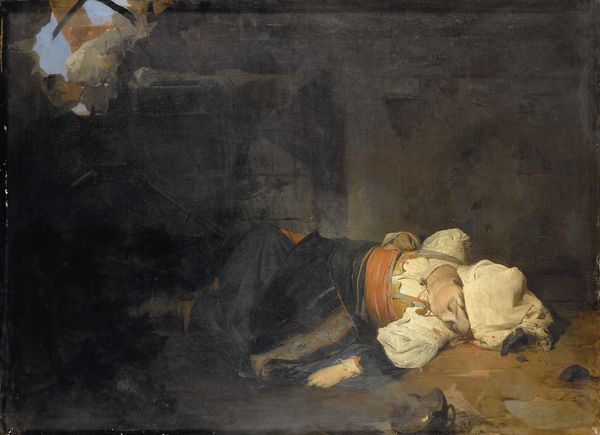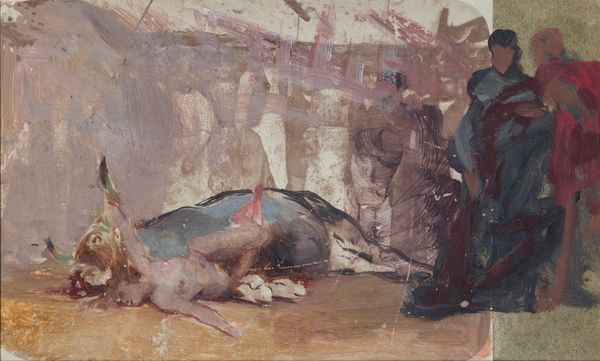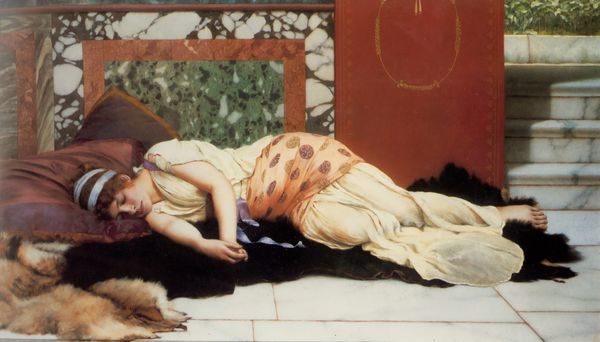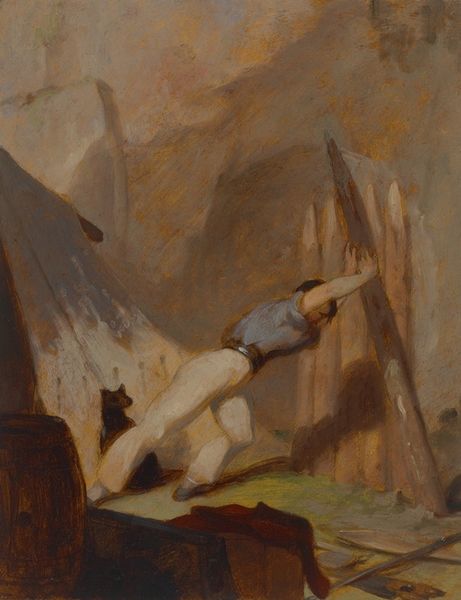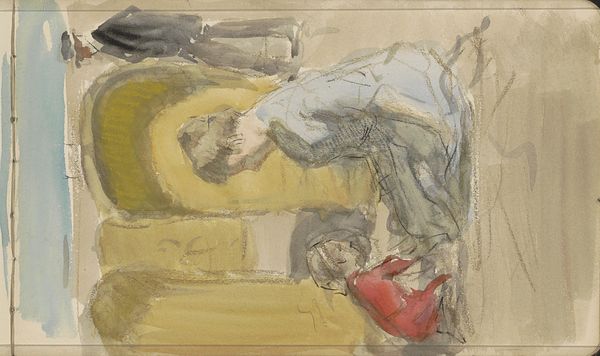
#
abstract painting
#
charcoal drawing
#
possibly oil pastel
#
oil painting
#
acrylic on canvas
#
underpainting
#
arch
#
men
#
painting painterly
#
animal drawing portrait
#
portrait drawing
#
watercolor
#
angel
Dimensions: 12.3 x 15 cm
Copyright: Public domain
Curator: James Tissot completed this watercolor titled "God's Promises to Abram" in 1902. Editor: It’s immediately striking how intimate this feels, despite the monumental subject. There's such vulnerability in the kneeling figure and the way the light bathes him, practically forcing intimacy between him and the viewer. Curator: Well, think about the tent dwelling depicted and its materials – the very fabric, probably woven by women of the tribe, shelters him, becomes his domestic space, which then frames this intensely spiritual interaction. Editor: Yes, precisely! The tent itself becomes almost a character here, imbued with its own symbolism. The architectural implications here speak of temporary, peripatetic lives, a constant tension of hope. Even the small star pattern could reference both belonging and transience in his life’s travels. Curator: It also reflects a clear process. The tent flap reveals its construction – seemingly simple poles propping up woven fabric. This underscores a constant theme in Tissot’s work, showing the conditions and support necessary for an extraordinary life. The carpet design beneath him, each tile repeating a central star, evokes not an ethereal realm, but crafted space of meaning-making, with clear design values. Editor: Yet, it transcends mere construction. The very visible ray of divine light immediately suggests spiritual power. How that single point bursts and fans, illuminating his kneeling posture speaks of an enduring contract made between deity and subject. This is all conveyed through fairly subtle representational cues. Curator: Absolutely. And the economic aspect cannot be understated here either: This would be extremely precious to families in antiquity – that the fabrics were woven finely. Consider how all such components comprise sacred space. This promise becomes bound in craft and materiality, more than divinity here! Editor: Perhaps, but consider also how Abram shields his eyes as though too much light or truth itself would blind. It visually references timeless iconography that still profoundly resonate today. These visual symbols trigger instant recall in viewers and connect us all over different geographies and histories. Curator: I’m always brought back to the understanding of process here, from preparation to product—and I’d argue in that way Tissot succeeds, less so in tapping something already established, so much more powerfully here in materialist intervention in established notions of history. Editor: In the end, perhaps Tissot suggests both worlds—the labor to manifest our ideals as well the ideals for which we labor are entwined and integral to lasting cultural meanings.
Comments
No comments
Be the first to comment and join the conversation on the ultimate creative platform.
